List of 15 Tough Ancient Warriors Through History
 When you think of an ancient warrior, a certain picture tends to come to
mind: tough, grizzled, bulging muscles, covered in blood and gripping at least
two weapons, standing on the corpses of fools who thought it was prudent to
attack. That picture is likely influenced by cinema, television, and pop
culture. After all, no one was really like that…right? When you think of an ancient warrior, a certain picture tends to come to
mind: tough, grizzled, bulging muscles, covered in blood and gripping at least
two weapons, standing on the corpses of fools who thought it was prudent to
attack. That picture is likely influenced by cinema, television, and pop
culture. After all, no one was really like that…right?
Surprisingly enough, sometimes real life is even more shocking than fiction.
There have been dozens of ancient warriors that put Hollywood to shame. Some of
them, when adapted into movies, had to be toned down from historical events
because the real story was too awesome to be believed. Although not every old
knight and spear-maiden was the stuff of legend, records remain of enough tough
ancient warriors to make any collective army shudder in their combat boots. Even
when standing alone, on top of the corpses of those who defied them, covered in
blood and clutching at least two weapons these warriors were able to strike fear
into their opponents without the use of modern-day weaponry.
There are too many awesome stories of warriors of times past to list them
all. Some are mostly based in mythology, but others are recorded historical
fact, going back thousands of years. This list is a compilation of the most
awesome, toughest ancient warriors through history. Some of them have had action
movies made out of their lives—and some of them are so much cooler than any
movie ever made that they make Hollywood producers scratch their heads and ask,
“What if we only give him one axe? Will the audience buy it then?”
15) Lu Bu
Lu Bu didn’t exactly have the coolest-sounding name. He lived in the Han
Dynasty of ancient China. His birth date is unknown, but he died in 199 CE,
nearly two thousand years ago. Fortunately, Chinese record-keeping at the
time was a lot better than it was in the Western World, or no one would have
heard of this badass.
Lu Bu changed bosses like a teenager who keeps getting caught spitting in
fast food, but much more dramatically than switching from one service job to
another could ever be. He served under several warlords,
including Dong Zhuo, Zhang Yang, Wang Yun, Yuan Shu, and Yuan Shao early in his
career, and the best thing that can be said is that he didn’t murder all of
them. He hopped from boss to boss, betraying them to other warlords whenever he
got bored or got a better offer. He was so massively built and adept at archery
and horsemanship that he earned the nickname “The Flying General.”
Lu Bu, Pictured to the Right, Murdering Boss Ding Yuan
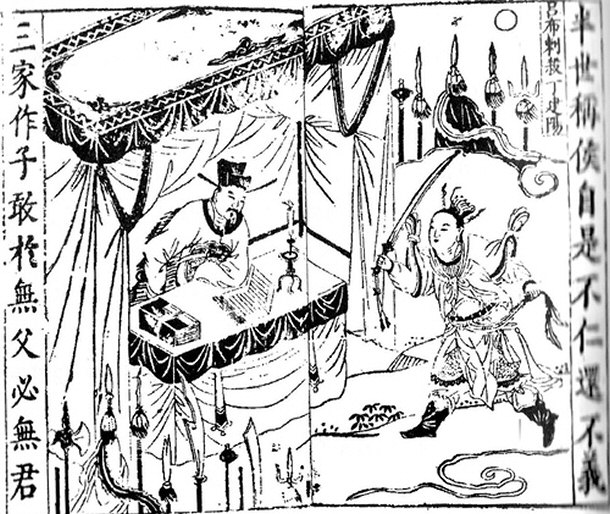
Unfortunately, in 199, he job-hopped a few too many times. He betrayed the
wrong master, Cao Cao, a warlord from Yan Province that he’d worked for and
betrayed a few times already. Cao Cao had him captured and executed after a
massive battle, leaving Lu Bu to go down in legend as an awesome warrior with
really poor planning skills.
14) Agis III
Unlike most of the names on this list, you’ve probably never heard of Agis
III. Even though he had one of the coolest last stands in the history of the
recorded world, Agis III is still widely forgotten by history, probably because
he was defeated by one of the other bad asses on our list, Alexander the Great.
Even though he was eventually defeated, Agis III ruled Sparta for nine years,
after the death of his father. He tried as hard as he could to fight against the
incoming menace that was Alexander the Great of Macedonia, but wound up (like
everyone else Alexander fought) on the losing end. He fell in battle after being
wounded several times to the front of his body, then picked himself back up
(bleeding heavily) and held the pass by himself to give his men time to escape.
People were so afraid to come at him, this god of death on the battlefield, that
he had to be killed by a thrown javelin instead of a sword.
The Doom Of Agis III, King of Sparta
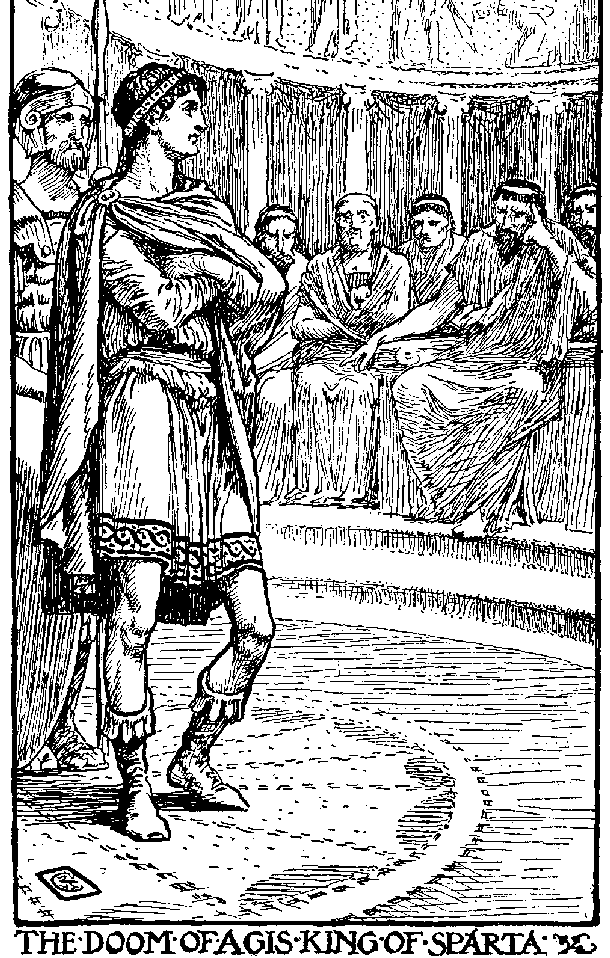
He might have messed up by going toe to toe with the guy that conquered
literally everyone he ever met, but hey, he couldn’t have known how history was
going to pan out. At least he died doing something ridiculously heroic, getting
all of his men to safety after their defeat. Knowing how Alexander treated
captives sometimes (see Alexander the Great’s entry), he probably saved all of
their lives.
13) Benkei
Benkei did pretty well in life for someone who was known as a child as “the
demon child,” and who some people even during his life thought was a demon or a
cruel god’s child. He reached a massive height of six and a half feet, and this
was in the days when the average Japanese man didn’t even reach five feet in
height. He used to guard a bridge, collecting swords of men he defeated, until
one man, Minamoto no Yoshitsune, defeated him in combat. He served Yoshitsune so
well that his name in Japan is pretty much synonymous with the word “loyalty.”
Benkei
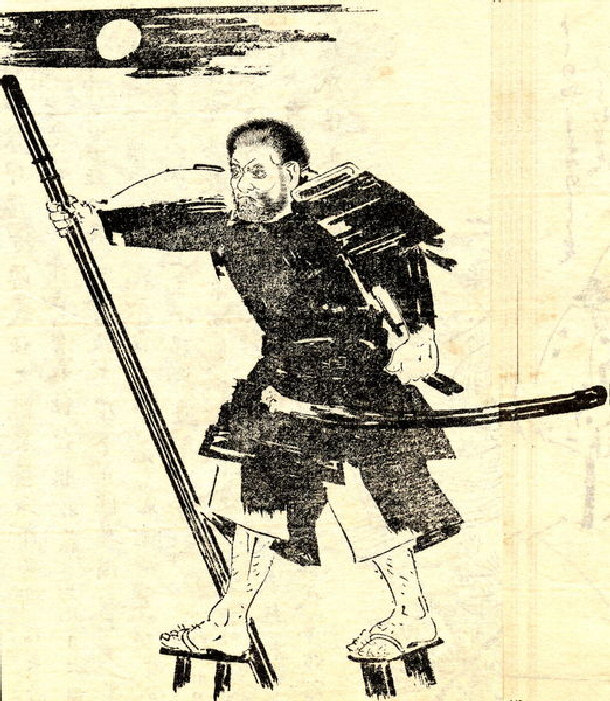
Years later, when Yoshitsune was finally defeated, he closed himself up in
his castle to slowly commit ritual suicide, and asked Benkei to hold off the
invaders until he was finished. Benkei held off 300 men by himself, and died in
such a fearsome standing position that it took the invaders several minutes to
discover he wasn’t still fighting. He managed to give his lord the chance to
properly commit seppuku, and died with his mission fulfilled. Most of the guys
on this list probably wouldn’t have given their lives just for the chance for
their boss to kill themselves, which is part of what makes Benkei such a badass.
12) Spartacus
Spartacus was one of the toughest old warriors to ever live. His origins are
unknown before he became a Roman slave. What is known is that he wasn’t a very
good slave, what with how he was always planning escape and honing his battle
skills and all. He was trained at a gladiator school, then was part of a group
of 70 slaves that fought their way to freedom using kitchen utensils. The slaves
chose Spartacus and two other slaves as their leaders, but the two other slaves
disappeared from records shortly afterwards.
Spartacus Pictured to the Lower Right of This Relief
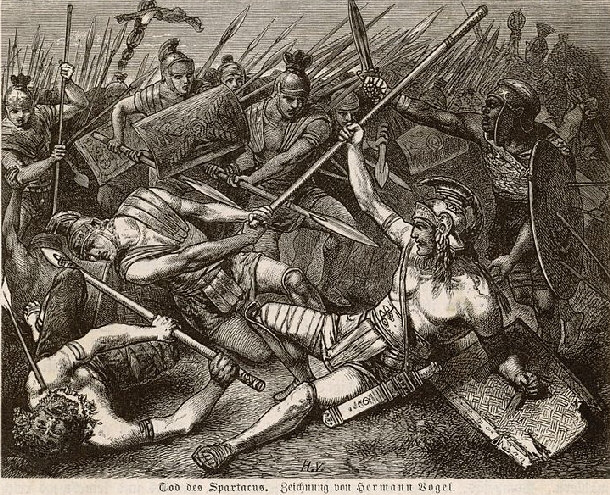
Not content with having his own freedom at last, Spartacus decided he wanted
to get a little of his own back. He and his men got themselves some actual armor
and swords (instead of whisks and spoons) and began a campaign to free slaves
from imprisonment. His group of rebels grew to over 70,000 at one point, and
scored a succession of victories against the most powerful army on earth, the
Roman Army, on several occasions. They even turned away from going home to
freedom just to harass the Romans a bit more.
Yes, they all died in the end, but for a while, Spartacus was just about the
most fearless guy on the planet.
11) Nobunaga
When he was young, Nobunaga would probably have been a lot of fun to hang out
with. To put it bluntly, if he were alive today, he’d have been the son of a
powerful dude, the kind of guy you'd call when you wanted a real party. In fact,
he got drunk at his own father’s funeral and behaved so badly that his teacher
committed suicide out of shame on his behalf.
None of that stopped him from becoming one of the most feared warlords Japan
had ever seen. During his first real battle, he faced a force of 20,000 men with
only 3,000. He attacked in total silence during a thunderstorm, and was so
successful in shocking his enemy that the general thought his own men were
fighting each other—until he got his head cut off.
Oda Nobunaga
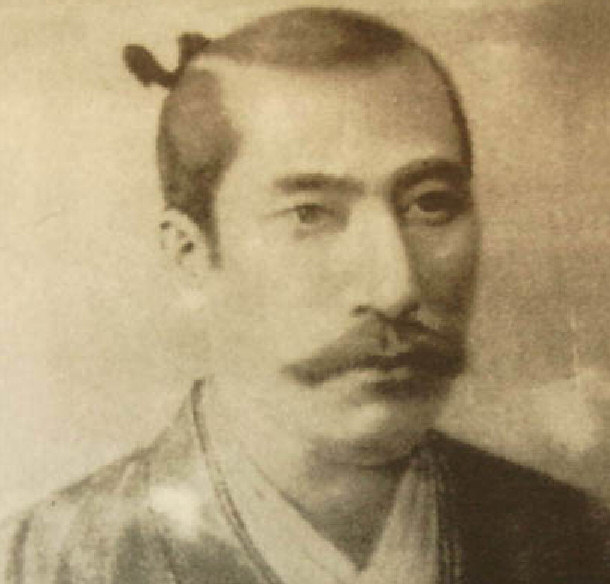
Nobunaga wasn’t too concerned with the whole “way of the warrior” thing that
makes Benkei so interesting. Instead, he was a big fan of “doing whatever he had
to in order to win,” like using explosives and guns when most of the samurai
thought they were dishonorable. Then again, most of the samurai didn’t conquer
all of Japan like Nobunaga did.
10) Alexander the Great
Alexander the Great is widely remembered as a conqueror. However, not many
people know too much about the individual incidents that make him a badass
worthy to be on a list of the toughest ancient warriors. For one thing, despite
spending his entire life in battles, he died without ever once being defeated.
For another, he began his life of conquest relatively young, becoming king at
the age of 20 years old.
Alexander the Great
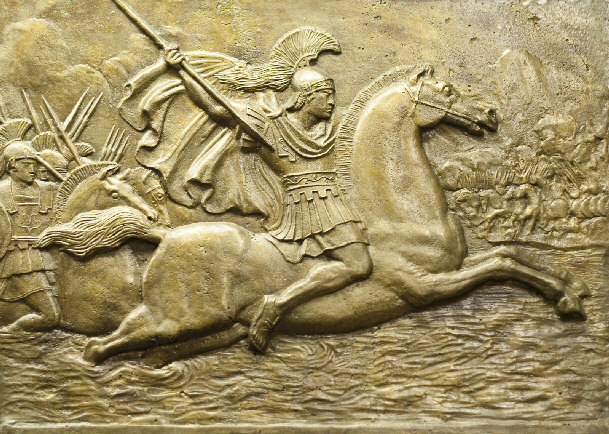
Alexander had a temper; cities that opened their gates to him were welcomed
into his Empire, and treated gently as new members of his Macedonian rule.
However, cities that put up too much of a fight were “dealt with” in a swift and
vicious manner. After spending months trying to capture the city of Tyre in a
long siege Alexander lost his temper and had every man of military age killed,
and all the women and children sold into slavery. He did the same at the
before-thought-unconquerable city of Gaza, when he invaded the Middle East. He
surged through Western Asia, Persia, the Middle East, and part of Northern
Africa, as well as everywhere around the Mediterranean sea.
Not bad for a guy who probably didn’t top five feet in height, and wasn’t his
father’s first choice of heirs.
9) Saladin
Saladin is one of the only warriors on this list that anyone would probably
want to have dinner with. Unlike most of the tough awesome warriors of
historical documentation, Saladin was always described as gentle, kind,
merciful, and chivalrous. He was fair, intelligent, and clever, and always
sought to avoid slaughter if he could help it. He was such a nice guy that even
the people he conquered kind of liked him—after he led a successful attack
against the English Crusaders, driving them out, he was still well-liked in
England, and held up as an example of a perfect gentleman enemy. He even died
poor after giving all his wealth away to his subjects.
That doesn’t mean he wasn’t tough as nails.
Saladin the Victorious
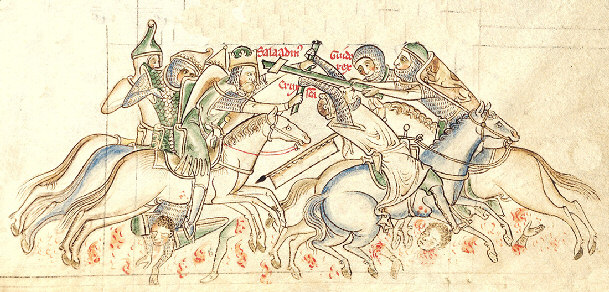
Niceness aside, Saladin was a military and political genius. At his most
powerful, he controlled Egypt, Syria, Yemen, and most of North Africa. He was
also able to re-capture Palestine from the British, who had held it for 88 years
previously. He was usually welcomed by the people he conquered as a liberator,
rather than feared as a demon.
Saladin just goes to show: just because you’re a nice guy doesn’t mean you
can’t be a badass.
|
Khutulun:
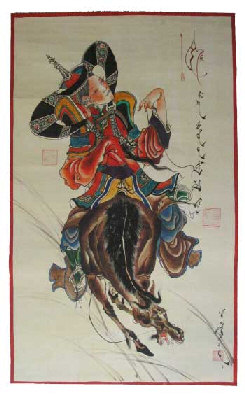
|
8) Khutulun
Khutulun deserves a place on a list of the toughest warriors because she has
been totally ruined by history. In her life, she was the niece of Kublai Khan,
and the daughter of Kaidu. She was the favorite child, in other words, of the
most powerful man in all of Asia at the time, and the favorite niece of one of
the most feared Emperors of all time. She swore she wouldn’t marry unless a man
could defeat her in wrestling, and if he lost, he had to give her 100 horses. In
this way, she won 10,000 horses from men, and was never defeated. She was a
fierce and proud warrior, and Kaidu tried to give her his whole kingdom when he
died.
Unfortunately, Western history has very little use for badass women,
apparently. In most Western adaptations, Khutulun was turned into a girl who is
proud, but finally succumbs to the charms of a man and the need to be in love.
Even more insultingly, she doesn’t get to wrestle her suitors, but has them
answer three riddles. When real life is so much cooler than fiction, you know
Hollywood has dropped the ball. Proud warrior princesses deserve all the
recognition they can get, not to be turned into operas about sad girls who use
riddles to hide their real desire for love.
7) Richard the Lionheart
Richard the Lionheart, also known as Richard I of England, was a pretty bad
king. He was never home, he didn’t pay much attention to England, and one time
he tried to sell London—and not in the “I have a bridge to sell you” way, he
needed money and wasn’t very fond of his homeland. He didn’t even speak English,
the tongue of his people. He was a pretty bad son as well, given the fact that
he rebelled against his father a few times, and a fairly bad husband, judging by
how he kept publicly confessing to the “sin of sodomy” and going back to his
wife.
Richard I of England
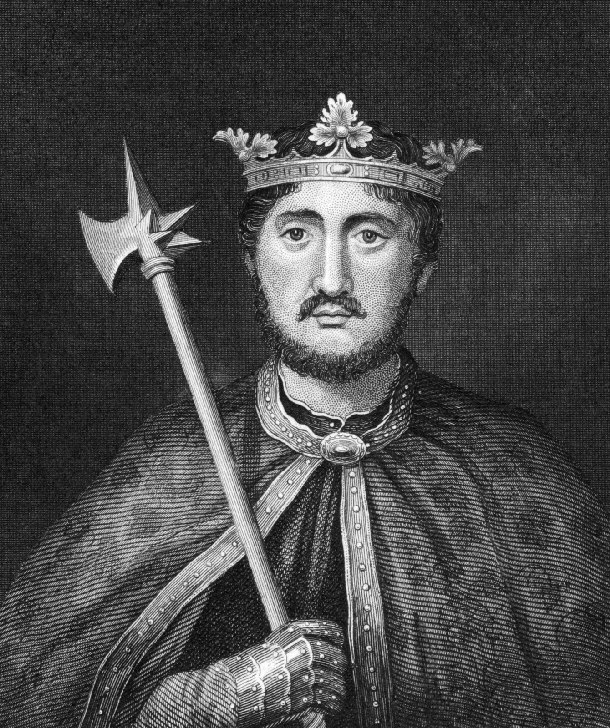
However, everyone can agree that he was one of the most badass soldiers ever
to grace British history. His enemies were terrified to face him on the field.
He was well over six feet tall according to contemporary accounts, and had
red-blond hair that he let shine on the battlefield, presumably to scare the
heck out of his enemies. He struck fear into the heart of his enemies during the
Crusades, and is remembered for being the most badass King in British
history. Before and after him, there were kings, and there were tough knights,
but there were rarely kings who were also tough knight
s. For that alone,
fighting when he didn’t have to (and probably shouldn’t have), Richard the Lionheart (seriously, what a cool name) deserves a place on this list.
6) Boudica
The prevailing sentiment regarding the Roman Army for tribal people was
pretty much just one phrase: get out of its way. Boudica, a Celtic queen living
in the first century AD in Britain, didn’t really care.
Boudica’s husband, Prasutagus, was a Celtic king. In his will he left half
of his country to his daughters, and the other half to the Romans in hopes that
they’d leave everything else alone. The Roman Army, as usual, decided to simply
take over. Boudica was publicly whipped, and her daughters were raped. In
retaliation, Boudica decided to simply wipe the Roman Empire out of Britain for
good.
Queen Boudica Statue in London, England
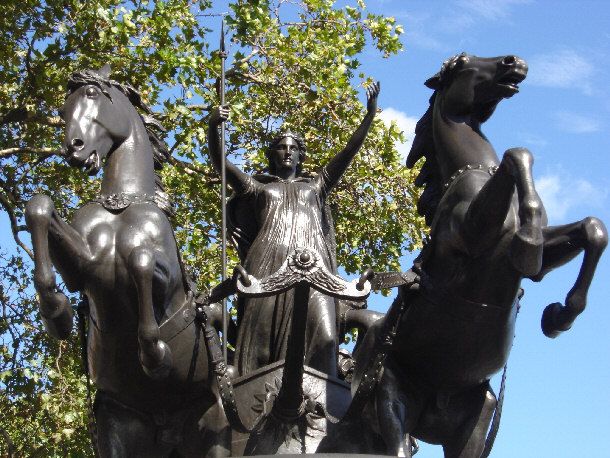
She led a force of 100,000 Britons (the native tribes of modern-day England,
Scotland, and Wales) against the might of the Roman Army in her homeland. She
destroyed and burned several cities, including the first iteration of London
itself. Even Emperor Nero was terrified of her. Eventually, when her forces were
defeated by a Roman general, Boudica killed herself rather than be taken alive
to be used against her people.
Best of all, all of the information currently available on Boudica was
written by the Romans, since her tribes had no form of writing. Since the Romans
tended to be a lot kinder to themselves than their enemies in their writings,
it’s probable that Boudica’s reign of terror was even more awesome than the
records say.
5) William Wallace
The pissing off of the people inhabiting lands in Britain didn’t begin and
end with the Romans. Edward I, also known as Edward Longshanks and The Hammer of
the Scots, was pretty good at it himself. This British king in the 1200s started
out by refusing to accept
Scottish independence, and lead military actions
against them after they’d asked him to arbitrate.
William Wallace Statue in Scotland
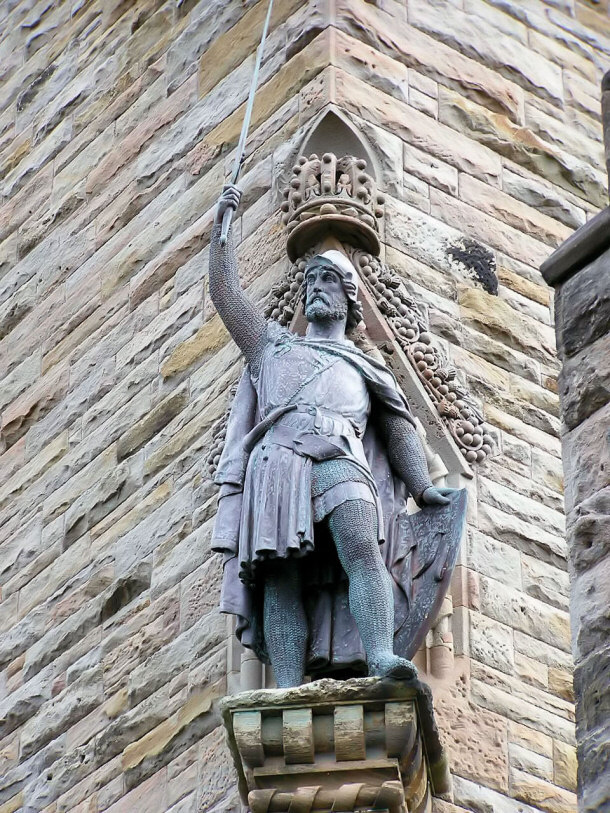
Enter William Wallace (of “Braveheart” fame), a giant Scottish noble who
carried a huge bow and a fierce hatred of the English. He assassinated British
nobles, laid waste to their armies, and even lead his own Scottish army to
conquer parts of England, including Sterling and Falkirk.
Eventually, he was betrayed by one of his own men to Edward, and died a
traitor’s death so gory that they had to cut parts of it out of the movie they
made about him. Unfortunately, there’s no record that he ever screamed “FREEDOM”
or that he knocked up the Queen of England, although his head was put on a pike
outside the Tower of London.
4) Leonidas
First of all, to get this over with, Leonidas and his men almost certainly
did not go into battle wearing red panties, no matter what the Frank Miller and
Zach Synder collaborative film might suggest. Secondly, there weren’t really
only 300 guys against a force of a million. Historians estimate that it was
about 300 Spartans, as well as a few hundred Grecians and a thousand Thebans…all
of whom died very quickly. The Persians, moreover, didn’t actually number a
million…just about 200,000. So really, they were only outnumbered about 200 to
one. Easy as pie, right?
Head of Leonidas Statue in Sparta, Greece
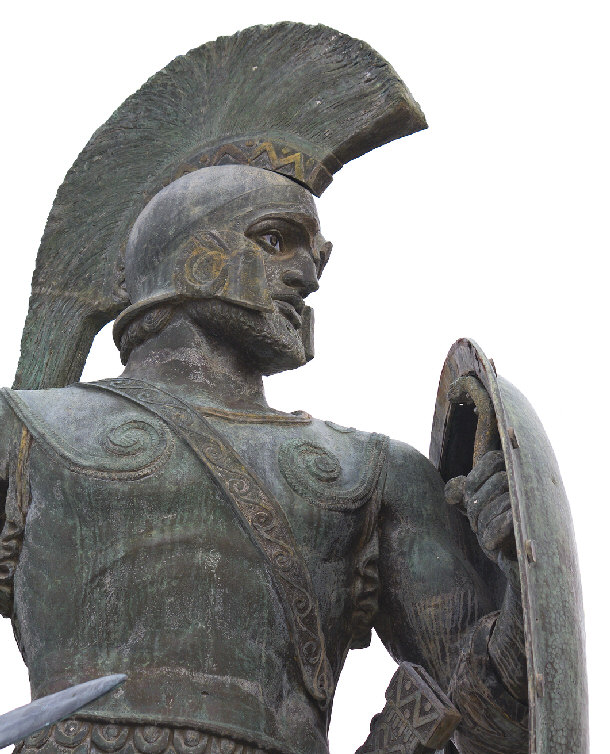
Leonidas also had the benefit of going through the harsh Spartan training
required of any child who wanted to grow up to be a full citizen, including
brutal battles and hunts of vicious animals at the age of 10. He was also kind
of a sass-master, as evidenced by his response to Xerxes’ claim that his arrows
would block out the sun: “Then we will fight in the shade.”
Nope, that’s not just a movie quote. He was actually just like that.
Leonidas and his 299 Spartan friends managed to hold the pass at Thermopylae
for longer than anyone thought possible, until the vastly superior force of the
Persians was defeated. This guy was a total badass, red panties or not.
3) Ching Shih
Most prostitutes don’t become pirate captains. Most prostitutes aren’t Ching
Shih.
Ching Shih worked as a Cantonese prostitute in a small brothel when she was
captured by pirates. Instead of being just “never heard from again,” she decided
to turn the situation to her advantage. She married the pirate captain, and six
years later, he died. Once that happened, Ching Shih took over his fleet,
gathering all of his loyal supporters and made sure all of them knew who was
the boss.
Ching Shih Pictured to the Right
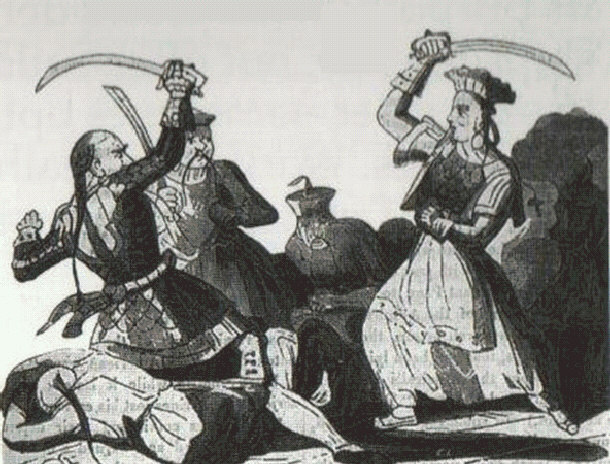
She laid down an iron code governing the treatment of female captives, the
distribution of wealth, the treatment of those who assisted them (such as
villagers supplying them food), and the punishments for those who defied her
(which were exciting and severe). She ruled her men with an iron fist, and
turned her fleet into the most feared pirate armada in all of China.
The Chinese government even came after Ching Shih, and she completely
defeated their entire Navy. Finally, when she got old and bored, she accepted an
offer of amnesty. She even kept all of the booty she’d acquired in her many years of
piracy, kept all of those who followed her from ever being prosecuted by the
government, and started a
gambling house in China with her profits from piracy. She lived until she died of old age,
living a lifestyle of complete wealth
and luxury.
2) Miyamoto Musashi
Miyamoto Musashi was born in the late 1500s, and lived until he died peacefully
of cancer. If that doesn’t sound like the death of a warrior, think about this:
he fought in several wars and over 60 duels, and was never once defeated or
injured. After his first few duels (the first one of which he fought at the age
of 13), he stopped using a sword because he thought it made the battles finish
too quickly. After that, he started using a wooden sword, and he still never
lost or was injured.
Miyamoto Musashi
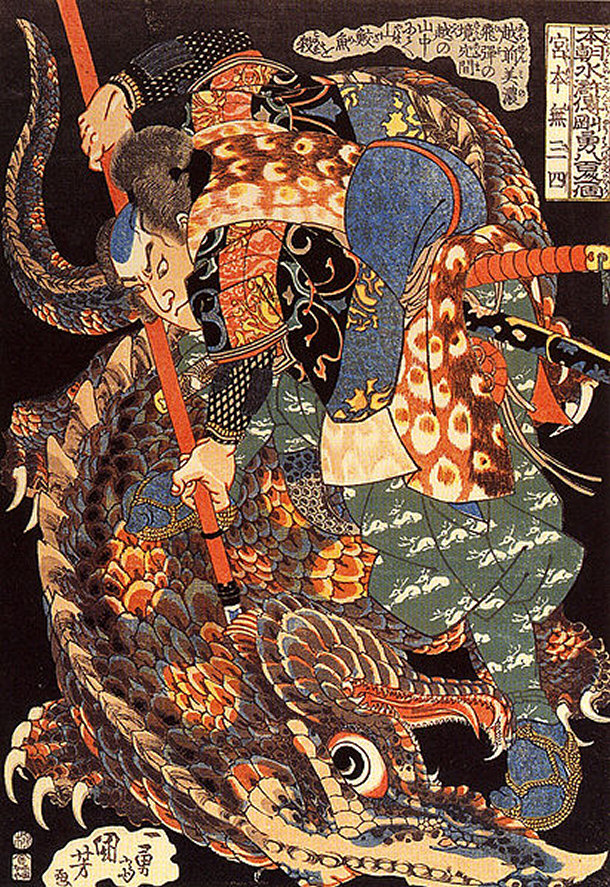
Musashi had a habit of arriving late and gross to battles, showing up
un-bathed and unapologetic, and pissing off his enemies so much that they’d
forget their strategies and run straight at him. If it’s any consolation to
them, he would later immortalize them—by writing books on strategy about what
not to do (namely, don’t run straightforward at your enemy, no matter how much
of a jerk he might seem to be).
Musashi lived in Japan at the height of the age of the samurai, although it’s
probable that with a background like his, he’d have found a way to be a samurai
even if he’d been born a couple hundred years later, or in Sweden or something.
He invented the style of using one sword in each hand—although when he taught it
to others, he taught them how to wield actual swords. He knew that not everyone
could be as amazing as Miyamoto Musashi.
1) Genghis Khan
Genghis Khan probably owns the record on the most awesome team-building
exercise of all time, resulting in the world’s largest contiguous (not separated
at all by water) empire of all time. When he came to power, the Mongol horde was
nothing more than a scattered bunch of tribes. After watching them kill each
other for a while, he decided that their efforts would be better spent killing
someone else, anyone else. They got to be pretty good at it, and eventually
brought other tribes into their murder-happy band. This resulted in the uniting of
pretty much all of the tribes of Mongolia. He was responsible for most of the
tenants of the Mongolian philosophy, including religious tolerance and a unified
writing system.
Genghis Khan
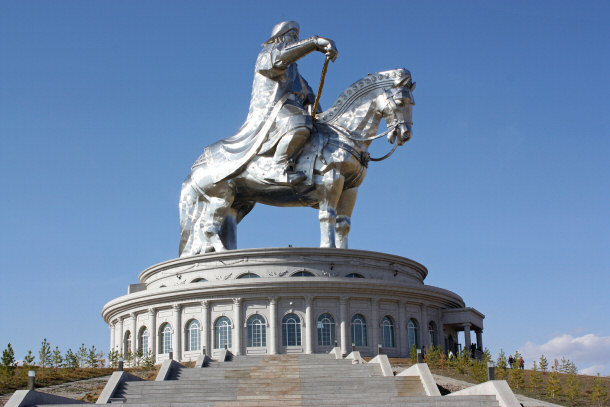
The other thing Genghis Khan did that you may not have read about in books
was to contribute to the health of the Mongolian Empire in other ways. In other
words, he’s well known to have had not just several wives, but thousands of
concubines. Not just he, but his sons also had so much progeny that it’s
estimated 8% of Asia, 0.5% of the world, or 3.5 million people alive today are
almost certainly descendants of Genghis Khan. True, it’s not exactly possible to
dig up his bones and put him on reality TV, but the numbers speak for
themselves.
Conclusion
Art can be cooler than life—but sometimes, the truth is way, way more
interesting than fiction. Some of the toughest ancient warriors have been
actually dumbed down and made more harmless by fiction, whereas others have just
had love stories added for no reason. The truth of these awesome heroes and
villains is almost always much cooler than the lies, and these badasses deserve
to be remembered.
History
Top Lists:
15 Biggest Architectural Blunders
Top 15 Most Horrifying Terrorist Attacks
15 Fascinating Facts About the Vietnam War
Top 15 Amazing Ancient Egyptian Architecture
20 Little Known Facts About the Titanic
Top 10 Most Creepiest Abandoned Places in the World
26 Interesting Facts About Henry Ford
List of 15 Tough Ancient Warriors Through History
List of 15 Notorious Roman Emperors and Empresses
Top 15 Worst Pandemics in History
15 Things That Remained the Same in the Past 100 Years
Top 15 Things China Invented First
Top 15 Greatest Inventors in History
15 Interesting Facts About Abraham Lincoln
10 Inventors Who Stole Their Ideas
15 Stories of Hilarious Medieval Victories
15 Detectives Credited With Solving The Biggest Cases In History
15 Fascinating Facts About the Ancient Pyramids
15 Inventions That Were the Result of a Mistake
15 Famous Stories of Execution
16 Rare Facts About the U.S. Presidency
15 Astonishing Leadership Stories that Ended up Successfully
Informational:
Analysis of the Linear B tablets and Wall Paintings
Aristophanes and Classical Greek Comedy
The First War of Scottish Independence
|